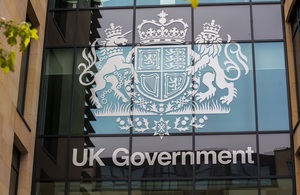March labour market statstics for Scotland
Unemployment in Scotland is down and employment is up according to the latest Office for National Statistics (ONS) data released today

Unemployment in Scotland fell by 6,000, to 190,000 in the period November 2013 to January 2014, according to ONS data released today. The Scottish unemployment rate is 6.9 percent, which is below the average of 7.2 per cent for the whole of the UK.
The labour market statistics also show employment in Scotland has increased by 15,000 over the three months November 2013 to January 2014. The number of those in employment in Scotland now stands at 2,561,000.
The Secretary of State for Scotland Alistair Carmichael said:
Creating the environment where businesses can create jobs and get people into employment is central to the government’s long-term economic plan to build a stronger, more competitive economy. Today’s figures show this plan is working for Scotland – that means more people into work and a Scottish economy that is going from strength to strength within the UK.
The number of Scots claiming unemployment benefits has now fallen for 16 consecutive months and is now 30,400 lower compared to a year ago.
We are doing well together. Each one of the figures today represents another person or household getting back into the labour market. There is no compelling argument why we should put that success at risk by becoming a separate country.
Today’s Budget will lay the foundations for Scotland’s long term economic security and continuing prosperity within the UK.
Headline Statistics for the November 2013 to January 2014 quarter:
Employment in Scotland increased by 15,000 over the quarter, and increased by 79,000 over the year, to stand at 2,561,000.
The Scots employment rate rose by 0.3 per cent over the quarter to 72.9 per cent. The rate is above the UK average of 72.3 per cent.
Unemployment in Scotland fell by 6,000 over the quarter and fell by 9,000 over the year. The level now stands at 190,000.
At 6.9 per cent, the Scots unemployment rate is below the UK rate as a whole at 7.2 per cent.
Economic Activity increased by 9,000 over the quarter and now stands at 2,752,000. Also, the Economic Activity rate increased slightly over the quarter to stand at 78.5 per cent.
In February 2014, the number of people out of work and claiming Jobseeker’s Allowance (JSA) was 106,800.
Latest Data for Scotland
Employment
The Labour Force Survey (LFS) indicates that the number of people in employment in Scotland from November 2013 to January 2014 was 2,561,000. Employment was up by 15,000 compared to the previous three months, and was up by 79,000 compared to the same quarter last year. The employment rate was up by 0.3 p.p. on the previous quarter, and it was up by 1.8 p.p. compared to the same quarter last year, at 72.9 per cent. In comparison, the Scottish employment rate is above the UK average.
Unemployment
Unemployment in Scotland was down 6,000 over the quarter November 2013 to January 2014, to 190,000. The level was down 9,000 compared to the same quarter last year. The unemployment rate was down on the previous quarter at 6.9 per cent, which is down 0.5 p.p. over the year.
Claimant Count
The claimant count in Scotland, based on the seasonally adjusted number of people claiming Job Seeker’s Allowance (JSA), fell by 3,300 from January to 106,800 in February 2014. The level is down by 30,400 on February 2013. The claimant count rate is down 0.1 p.p. over the month at 3.8 per cent, and is down 1.1 p.p. over the year.
Economic Activity
The number of economically active (defined as those in employment or ILO unemployed, and seasonally adjusted) in Scotland in the November 2013 to January 2014 quarter was 2,752,000. This was up 9,000 on the previous quarter, and is up 69,000 on the same point a year ago. Among those aged 16-64 the economic activity rate was 78.5 per cent, up 0.1 p.p. on the previous quarter, and up 1.5 p.p. over the year.